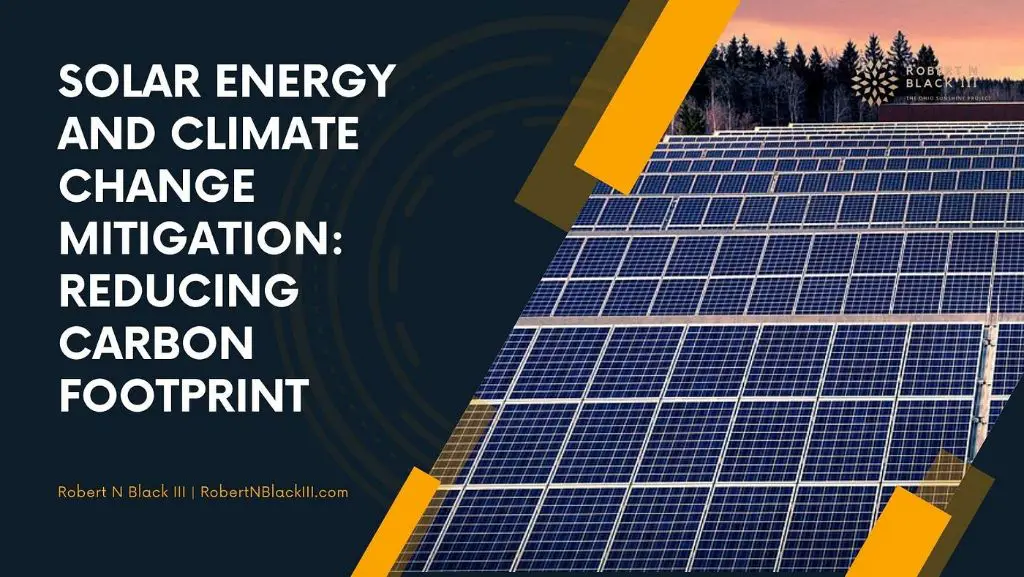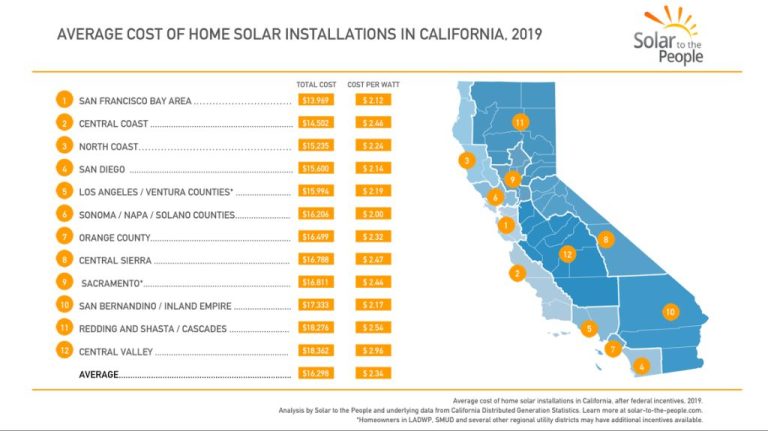Will Solar Panels Become Mandatory?
The use of solar power has skyrocketed in recent years, with an average annual growth rate of 24% over the past decade.
As solar adoption rises, an important question emerges – will solar panels become mandatory for homes and businesses? This article examines the growing popularity of solar power, government policies, industry perspectives, and what the future may hold for mandates on solar panel installation.
Advances in technology along with favorable incentives have driven rapid growth. The solar industry saw installations rise 34% from 2020 to 2021 [1]. With such momentum, it’s worth considering how far adoption could go.
Current Status of Solar Power
The solar energy industry has experienced rapid growth in the United States over the past decade. According to the Solar Energy Industries Association (SEIA), the amount of solar installed has increased more than 50-fold from 1.2 gigawatts in 2008 to over 100 gigawatts today
As of Q2 2022, there are over 3.14 million solar installations in the U.S., with solar accounting for 4.3% of total electricity generation. Most of these installations are residential, with over 2.9 million homes now powered by solar panels. This represents a 34% increase in residential solar adoption from 2020 to 2021.
<[https://www.seia.org/solar-industry-research-data](https://www.seia.org/solar-industry-research-data)>
The solar energy market is projected to continue its rapid growth, with total U.S. solar capacity expected to nearly triple over the next 5 years. Annual solar installations could reach 30 GW per year by 2025.
<[https://sistinesolar.com/solar-energy-market-growth/](https://sistinesolar.com/solar-energy-market-growth/)>
Solar adoption varies widely by state, with California leading in total installed capacity at over 30 GW. Top states for residential solar penetration include California (19.4%), Hawaii (18.4%), and Arizona (13.4%).
<[https://www.pewresearch.org/short-reads/2022/10/14/home-solar-panel-adoption-continues-to-rise-in-the-u-s/](https://www.pewresearch.org/short-reads/2022/10/14/home-solar-panel-adoption-continues-to-rise-in-the-u-s/)>
Benefits of Widespread Solar Adoption
There are several benefits resulting from the widespread adoption of solar energy:

Reduced carbon emissions – Solar power generates electricity without emitting greenhouse gases or other pollutants. According to the U.S. Department of Energy, “Each kilowatt-hour (kWh) of solar that displaces a kWh from the grid reduces CO2 emissions by 1 pound” (source). Widespread solar adoption could significantly reduce a nation’s carbon footprint.
Energy independence and grid resilience – Solar energy reduces dependence on imported fuels and vulnerable transmission infrastructure. Distributed solar power generated at individual homes and businesses improves the resilience and reliability of the electric grid (source).
Job creation in the solar industry – The solar energy industry is rapidly expanding and creating many new jobs. According to one report, the solar industry employs more people than coal, gas and oil combined (source). Widespread solar adoption will continue driving job growth.
Lower energy bills for consumers – Home and business owners with solar panels can reduce their electricity bills by generating their own renewable power. The electricity produced can offset grid purchases. Any excess solar energy can even be sold back to the grid through net metering programs (source).
Challenges and Limitations
While solar power offers many benefits, there are also significant challenges and limitations to overcome before it can become a truly dominant energy source. Some of the key challenges include:
High Upfront Costs
Installing solar panels and related infrastructure like inverters and batteries requires major upfront investments. According to the Solar Energy Industries Association, the average cost of a residential solar system is around $18,000 before incentives (SEIA). Even with federal and local incentives, these costs put solar out of reach for many households.
Intermittency Requires Storage Solutions
Since solar only generates power during daylight hours, storage systems are needed to provide power at night. Battery storage adds significant extra costs. Without affordable, large-scale storage, solar cannot reliably meet electricity demand around the clock (Fuergy).
Aesthetic Concerns
Some communities oppose large solar installations because they are visually unappealing. Rooftop solar panels can also face resistance for aesthetic reasons. Overcoming “not in my backyard” attitudes presents obstacles to solar adoption.
Permitting and Zoning Hurdles
The logistics involved in permits, environmental impact assessments, grid connections and land leases slow down solar projects. Outdated zoning laws sometimes prohibit installations. Red tape has hampered solar farms in some regions (Harvard Business Review).
Potential Business Model Disruptions
Widespread rooftop solar adoption allows households to become producers as well as consumers of electricity. This can strain utilities’ traditional business models and frighten investors. Reform is needed to align solar incentives with electric grid needs (GreenMatch).
Government Policies Promoting Solar
Governments at the federal, state, and local levels have implemented a variety of policies and incentives to promote the adoption of solar power. Key policies include:
Tax Credits and Rebates
The federal government offers a 26% tax credit for installing residential solar systems through 2032. Many states like California, New York, and Florida also offer additional rebates and incentives that can reduce the upfront cost of going solar by up to 50-70% [1].
Net Metering Laws
Net metering allows solar panel owners to get credit for excess energy sent back to the grid. Over 40 states have enacted net metering laws, although some are moving to phase out or alter the policies [2].
Renewable Portfolio Standards
Over 25 states have Renewable Portfolio Standards that require utilities to source a certain percentage of their electricity from renewable sources. This creates demand for large-scale solar projects.
Streamlined Permitting
Some local governments have simplified the solar permitting process to make it faster and cheaper to install rooftop solar panels.
Low-Income Solar Incentives
A few states offer enhanced solar incentives for low-income households, nonprofit organizations, and affordable housing projects to expand solar access.
Are Mandates Next?
Some local and state governments have begun exploring mandates for solar panels on new construction, following precedents like building energy codes that set minimum standards for efficiency and performance. For example, California became the first state to mandate solar panels on new homes starting in 2020, requiring all new single-family homes and multifamily buildings up to three stories tall to include solar panels.
Other cities and states like New York City and Massachusetts are also considering proposals to mandate solar readiness or installation for new buildings. Supporters argue mandates help accelerate the transition to renewable energy and ensure buildings are designed for sustainability from the start. However, opponents raise concerns about the costs being passed to consumers and limiting choice.
Those against mandates prefer incentive-based policies like tax breaks, rebates, and streamlined permitting that can encourage solar adoption while allowing flexibility. Mandating solar does increase installations rapidly but could also meet resistance if the requirements are too rigid or onerous. Ultimately, a balanced approach using mandates for public buildings along with incentives for private construction may be the most effective path forward.
Sources:
Industry and Consumer Perspectives
The solar industry has been largely supportive of mandates to increase adoption of their products. According to the Solar Energy Industries Association, California’s mandate will provide benefits such as job creation, grid reliability, and reduced greenhouse gas emissions (SEIA Statement on California Energy Commission’s Proposed Solar Mandate for New Homes). However, they caution against proposals that would significantly raise costs for consumers.
Surveys show that most California residents support solar power, but are divided on mandates. A 2021 poll by the Public Policy Institute of California found that 79% of residents favor policies to expand solar panel use, but only 54% supported requiring solar panels on new homes. Critics argue that mandates remove consumer choice and may disproportionately burden low-income homeowners (Why solar mandate will add to California’s high cost of housing).
Some lawmakers have voiced concerns about how mandates could impact housing affordability. Assemblymember Laura Friedman stated, “We want to make sure we’re doing this in a way that doesn’t make our housing crisis even worse” (California’s residential solar rules overhauled after highly contentious process).
The Future Outlook
With current policies in place globally, solar power is projected to continue its rapid growth over the coming decades. According to the International Energy Agency (IEA), renewables like solar are set to provide 80% of new power generation capacity through 2030, with solar alone accounting for over 60% under today’s policy settings (IEA). The Solar Energy Industries Association (SEIA) has set a target of solar providing 30% of US electricity generation by 2030, up from only 3% in 2020 (SEIA).
While mandates have played a role in solar’s growth so far in some areas, broader adoption of mandates is still debated. Some experts argue that mandates are necessary to accelerate solar’s role and meet climate goals, while others believe continued policy support and market trends will drive growth voluntarily. According to analysis by Thunder Said Energy, with supportive policies, global solar capacity additions could accelerate 3.5x by 2030 and 5x by 2040 compared to 2020 (Thunder Said Energy).
In summary, while the details vary, most expert forecasts point to dramatic growth in solar generation over the coming decades, whether through mandates or continued adoption under current policies. Solar is expected to become one of the primary sources of new electricity capacity going forward.
Conclusions
In reviewing the current landscape, there are reasonable arguments on both sides of the debate about whether solar panel mandates are the right policy approach. Proponents argue that mandates would accelerate solar adoption, maximize climate and cost benefits, and ensure more equitable access. With proper program design, mandates could unleash solar power’s potential without excessive costs or burdens. However, critics counter that mandates are heavy-handed, would face backlash, and could strain utilities and consumers. They believe continuing voluntary incentives and market-driven growth is the better path.
The outlook for solar remains strong either way, but could accelerate faster with mandates if implemented thoughtfully. Solar energy has consistently exceeded projections thanks to falling costs and technological improvements. Market forces appear poised to drive continued growth for the foreseeable future. However, mandates could turbocharge the transition. With climate change an urgent priority, many see value in being more aggressive. But there are still open questions about how to enact mandates fairly. The future of solar energy is bright, with or without sweeping mandates. But this complex issue will continue being debated by policymakers, the industry, and the public.
Key Takeaways
The rapid growth of solar power shows its increasing viability, but widespread mandates still face political, practical and economic hurdles. While solar will play a major role in the renewable energy mix, sweeping mandates are unlikely in the near future. This analysis leads to three key conclusions:
- Solar power has clear benefits, but limitations persist around storage and transmission.
- Market forces and incentives are driving solar adoption more than mandates.
- Striking the right balance of policies and investments will shape the future expansion of solar.
Looking ahead, solar will continue growing in the global energy portfolio. But rather than nationwide mandates, we are likely to see an expanding mosaic of local and state policies aimed at optimizing solar infrastructure. The future is bright for solar, even without blanket mandates.







